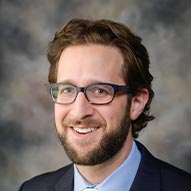Prevention
Wearing a seat belt and other proper restraints for a child’s age is one of the best prevention's for spinal cord injuries in children.
- Parents also can make homes safer from falls by removing tripping hazards and installing safety gates where appropriate.
- Experts caution that children younger than age 1 should not be carried on bicycles. They also encourage teens to use caution when skateboarding and bicycling, including use of helmets and avoiding use of headphones while on bikes.
- Parents should teach children and teens about safety around water to avoid accidents from diving and falling into pools and shallow bodies of water.
Emergency treatment
When your child is injured and may have damage to his spinal cord, you need to seek emergency treatment. Once emergency personnel and doctors assess the injury and stabilize your child’s spine, they will begin to evaluate health and movement problems your child might have as a result of the injury.
The first treatment for spinal cord injury takes place where the accident occurs. Emergency personnel are specially trained to recognize possible neck and back trauma and to keep your child as still as possible, placing her on a special board for transport to the hospital. When your child arrives at the emergency department, doctors may use traction, surgery or special medication to help prevent further damage to the spinal cord.
Once your child is past the emergency stage, doctors treat the spinal cord injury depending on how severe the injury is and where it is located along the spine. Every child’s injury is different, and your child may need certain devices such as braces, or rehabilitation to help your child relearn how to perform some activities.
Children who have problems with their bladder or urinary tract because of a spinal cord injury need help from a doctor to manage the flow of urine. Nerve damage can keep the bladder from emptying as it should. This can cause frequent urinary tract infections and kidney problems. Some children need specialized surgery or medications to help their bladders and urinary tract systems function as they should.
Surgery
Sometimes, doctors must insert catheters or perform a vesicostomy, which is an opening in your child’s lower abdomen to allow urine to flow.
At Children’s Health, our urology team can use a robot to operate in very small spaces, which means a smaller incision, and a way to help children empty their bladders on their own.





